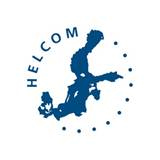
A new study of St. Petersburg waste water helps to manage microplastics
26 June 2014
new study made in St. Petersburg, Russia, has found that the waste water treatment process reduces effectively the amount of micro-sized plastics in waste water. However, it is also possible that the waste water treatment plants themselves constitute a point source of microplastic litter into the Baltic Sea aquatic environment. Microplastic litter is a growing concern; it harms the coastal and marine environments ecologically, economically as well as socially.
Public and scientific interest in microplastic waste in marine environment has increased considerably in recent years, but relatively little is known about the sources of these fragments less than 5mm in size. The EU-funded HELCOM BASE project commissioned the study from Helsinki Region Environmental Services Authority (HSY) and the State Unitary Enterprise “Vodokanal of St. Petersburg”. HSY has developed a microplastic sampling method targeted at waste water and now applied in the joint study. One of the results of the research project is the transfer of knowledge of the procedures and methodology for studying microplastics in this context. Thanks to this successful cooperation the Vodokanal of St. Petersburg will be able to continue microplastic research independently.
Annual global plastic production keeps increasing, and it is evaluated that marine litter consists by 60–80 % of plastics, most of it being very small and called microplastics. The smallest particles are especially problematic because they are very persistent; they potentially transport harmful substances more efficiently than larger particles; and they can be ingested actively by small organisms with rapid metabolism and potentially accumulate in the food web.
Despite the plastic litter being a growing concern, only a few studies exist globally about the sources of microplastics, and also the methods of sampling and analyzing lack standards.
In the new report, the amount of microplastic was studied by sampling the wastewater at the beginning of the purification process as well as during and after the process. Water samples were filtered through different mesh-sized filters using a specific filter device. All samples were inspected under a light microscope and microplastics were identified and counted. The methodology has been successfully used in a pilot study at Viikinmäki WWTP (in 2012 and 2013).
Due to the preliminary status of the research project, the gained results – the treatment process reducing effectively the amount of micro-sized litter but a part of it also ending up in the environment – must be seen as indicative. In order to evaluate the actual role of waste water treatment plants in the total microplastic load of the marine environment, a more detailed investigation is needed into the amount and types of microplastic litter in wastewaters and in natural waters. Furthermore, extensive studies of other possible sources are needed.


